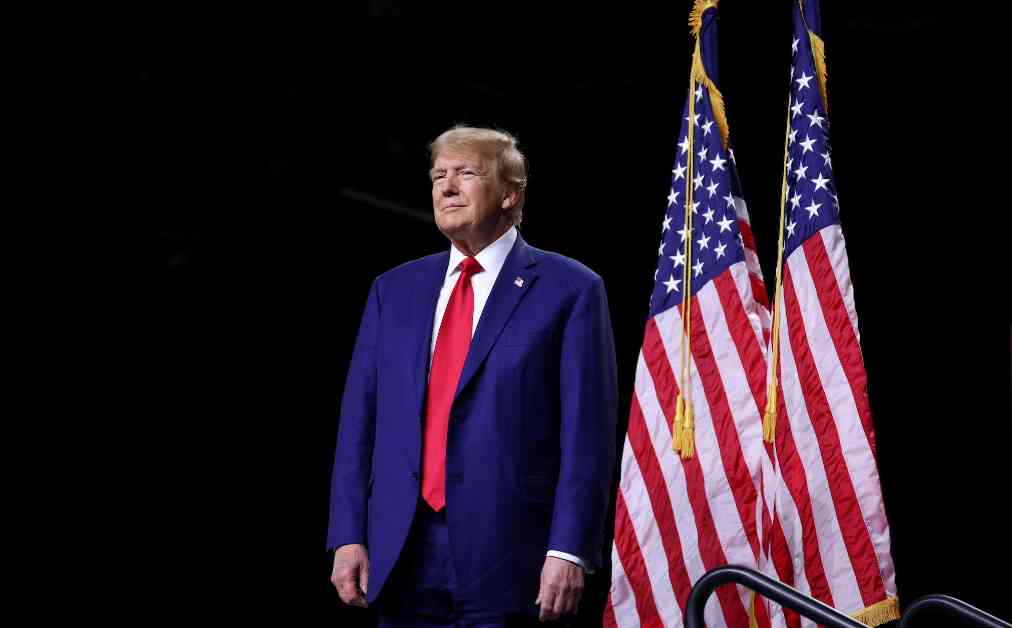With Donald Trump’s election as the next President of the United States, immigration has once again become a defining issue in American politics. His campaign rhetoric and past policy moves signal a return to hardline stances that could have far-reaching implications for millions of immigrants. For Indian Americans and Indian nationals, especially those on H-1B and L1 visas, the next four years could usher in significant challenges.
Many in the community are bracing for what could be a wave of sweeping reforms aimed not just at curbing illegal immigration but also at restricting legal immigration pathways. These concerns are underscored by the contents of Project 2025, a detailed blueprint prepared by key Trump allies to overhaul the U.S. government, including its immigration system.
Here are some key areas likely to be affected and the potential consequences for Indian Americans:
Employment authorization for H-1B and L-1 spouses
One of the most immediate concerns involves the potential repeal of employment authorization for spouses of H-1B and L-1 visa holders. Introduced under the Obama administration, this policy has been a lifeline for hundreds of thousands of individuals, more than 80 percent of them Indian nationals, allowing them to work legally in the U.S.
During Trump’s first term, efforts to revoke this provision were met with legal challenges but ultimately failed. However, the renewed push to eliminate it could destabilize thousands of families, particularly those relying on dual incomes. Losing this benefit would not only affect household finances but also force many spouses to remain unemployed, limiting their professional growth and contributions to the economy.
The future of H-1B and L-1 visas
The H-1B program has been a cornerstone of Indian American immigration, providing skilled workers to meet the demands of industries like technology. However, under Trump’s “America First” agenda, even this program could face cuts.
Despite advocacy from tech leaders like Elon Musk and Peter Thiel, who support maintaining or expanding H-1B quotas, immigration hardline Trump advisors like Stephen Miller and former Fox News anchor Tucker Carlson may push for restrictions such as limiting H-1B to professionals with advanced degrees and by increasing the wage requirement. Any reduction in H-1B or L-1 visa numbers would disproportionately impact Indian nationals, who make up a significant share of these visa holders.
Further complicating matters is the economic uncertainty tied to Trump’s proposed tariffs and tax cuts. If these policies lead to inflation and higher unemployment, foreign workers could be among the first to lose their jobs, exacerbating an already precarious situation.
Employment-based green card petitions
Currently, more than 1.2 million individuals, including dependents such as spouses and minor children, are waiting for green cards in the first three employment-based visa categories: EB-1, EB-2, and EB-3. While Trump has not yet announced any changes to these categories, during his first term, he mandated that all employment-based green card applicants undergoing adjustment of status in the U.S. attend in-person interviews at USCIS offices, significantly delaying the process. It remains to be seen whether he will reinstate this requirement.
Family-sponsored green cards
Trump and his hardline immigration aides have long targeted F4 preference category visas, which allow U.S. citizens to sponsor their siblings, branded as “chain migration.” With 65,000 visas issued annually under this program, its elimination would disrupt family reunifications for many, including Indian Americans.
Discussions have also extended to restricting the sponsorship of parents by U.S. citizens. While these proposals haven’t garnered as much public attention, their implementation would further tighten family-based immigration pathways, making it harder for families to stay connected across borders.
Birthright citizenship
One of the most controversial proposals involves altering the birthright citizenship policy, which currently grants automatic U.S. citizenship to anyone born on American soil. Trump has floated the idea of requiring at least one parent to be a U.S. citizen or legal resident for their child to obtain citizenship.
This change would mark a significant departure from the jus soli principle enshrined in the Constitution and could create a new class of stateless individuals born in the U.S. The ripple effects of such a policy would be profound, potentially reshaping the nation’s demographic and legal landscape.
Deportations and the undocumented
Miller, Trump’s top immigration advisor, has already laid out plans for mass deportations, targeting over 10 million undocumented immigrants. While initial efforts would focus on those with criminal records, the broader goal is to remove all undocumented individuals.
This policy poses a particular threat to the 750,000 undocumented Indian nationals in the U.S., many from states such as Punjab and Gujarat. For these communities, deportations would mean the loss of livelihoods, disruption of families, and the dismantling of established networks.
Ironically, some Indian Americans initially supported Trump, believing that stricter immigration enforcement would reduce backlogs for employment-based green cards. However, as the broader implications of these policies become clear, many are now reconsidering their positions.
Merit-based immigration
Trump has frequently touted a move toward a merit-based immigration system, similar to those in Canada and Australia. Such a system would prioritize applicants based on their skills, education, and job offers rather than family ties.
For Indian nationals, particularly those on F-1 student visas enrolled in programs like PhD, this potential shift could open new opportunities. Many Indians pursue advanced degrees in the U.S., positioning them as ideal candidates under a points-based system. However, the transition would require substantial policy overhauls and could lead to uncertainty for those already in the immigration pipeline.
On the downside, however, Miller proposed eliminating the STEM OPT program, which grants employment authorization for two additional years to students with STEM degrees. He also advocated requiring foreign graduates of U.S. universities to work outside the United States for a certain number of years before becoming eligible for employment in the U.S.
Growing anxiety in the community
The possibility of sweeping immigration reforms has already triggered a wave of panic among many Indian Americans. As an immigration attorney, I have seen a surge in inquiries about naturalization and family sponsorships, with many hoping to file petitions before any potential new rules take effect.
Some are also bracing for the return of the public charge rule, which would require detailed financial documentation from green card applicants to prove they won’t become dependent on public assistance. During Trump’s first term, this policy added significant bureaucratic hurdles, often delaying or denying applications over minor errors.
Trump’s initial presidency brought a wave of heightened scrutiny to immigration applications. Even minor mistakes, like leaving a field blank instead of marking it “Not applicable,” resulted in denials. This strict enforcement created an atmosphere of fear and uncertainty, which many now fear will return.
For Indian Americans who supported Trump’s perceived pro-business stance, these developments have been a wake-up call. One naturalization applicant expressed regret upon learning that family sponsorships could be cut, highlighting the disconnect between campaign promises and policy reality.
As Trump prepares to return to the White House, the uncertainty extends beyond undocumented immigrants. The stakes are particularly high for the largely affluent Indian American community, with potential changes looming in key immigration areas such as family reunification, employment, and naturalization. While some proposals, like merit-based immigration, could benefit certain segments, others threaten to roll back hard-won gains.














